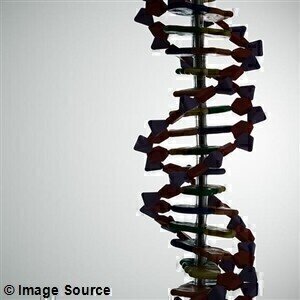News
DNA Structures Provide Alternative Delivery System
Feb 22 2016
Researchers from UCL and Nanion Technologies have used DNA to construct pores with a defined shape and charge which can be used to improve drug delivery. The study* shows these building blocks, which control which molecules can pass through the pore and when, can be precisely anchored into the walls – or membranes – of vesicles which are carrying therapeutics targeted to different tissues using biological markers. Previously, releasing drugs from inside vesicles was triggered with temperature-induced leaky vesicle walls or with inserted peptide channels, which are less rigid and predictable than DNA. The research was funded by BBSRC, Leverhulme Trust and UCL Chemistry.
Lead author, Dr Stefan Howorka (UCL Chemistry), said: “Natural biological pores made of proteins are essential for transporting cargo into and out of biological cells but they are hard to design from scratch. DNA offers a whole new strategy for constructing highly specific synthetic pores that we can open and close on demand. We’ve engineered our pores to act like doors – the door unlocks only when provided with the right key. By building these pores into drug carriers, we think it will allow for much more precise targeting of therapeutics.”
“Our pores take the shape of an open barrel made of six DNA staves. We designed a molecular gate to close off one entrance but then re-open the channel when a specific molecule binds. Anchors with high membrane affinity were attached to tether the water-soluble pores into the oily membrane,” said first author, Dr Jonathan Burns (UCL Chemistry).
Co-author Astrid Seifert who works with Dr Niels Fertig at Nanion Technologies, said: “We were able to precisely analyse the performance of each of the pores we created. We first inserted pores in membranes and then tested the biophysical response of each channel using advanced microchips. We’ve not only developed a new way to design highly specific pores but also an automated method to test their properties in situ, which will be important for testing pores being used for targeted drug delivery in the future.”
The researchers plan on testing the synthetic pores in a variety of scenarios including the release of anti-cancer drugs to cells and the development of pores that release pharmaceutically active biomolecules.
*Published in Nature Nanotechnology
Digital Edition
Lab Asia Dec 2025
December 2025
Chromatography Articles- Cutting-edge sample preparation tools help laboratories to stay ahead of the curveMass Spectrometry & Spectroscopy Articles- Unlocking the complexity of metabolomics: Pushi...
View all digital editions
Events
Jan 21 2026 Tokyo, Japan
Jan 28 2026 Tokyo, Japan
Jan 29 2026 New Delhi, India
Feb 07 2026 Boston, MA, USA
Asia Pharma Expo/Asia Lab Expo
Feb 12 2026 Dhaka, Bangladesh




















